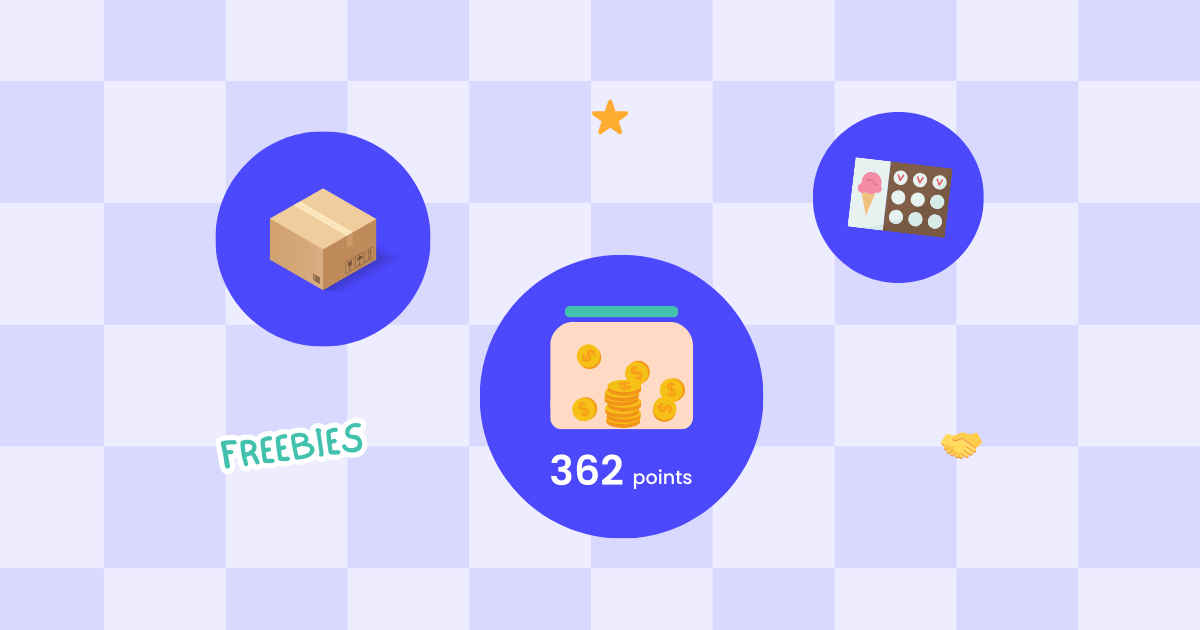Should businesses bother with customer loyalty programs? If you were to ask customers, you’d see the appetite is clearly there. In 2022, the average American was a member of 16.6 different loyalty initiatives.
Given that retaining existing customers is much more cost-effective than acquiring new ones, launching your own program might seem like a no-brainer. But there’s a catch: out of all the programs they’ve signed up for, Americans actively participate in fewer than half.
To reap the many potential benefits of your loyalty program, you’ll need a strategy to make it engaging, relevant, and cost-effective.
This article will introduce how a strong loyalty program can put you on a solid path to sustainable growth. Then, we’ll cover some of the essential elements to include in your program.
What are customer loyalty programs?
A customer loyalty program encourages shoppers to make purchases or engage with a brand by offering benefits such as discounts, freebies, or VIP treatment.
These programs can take a number of different forms, but they’re all based on the idea that loyalty is good for business.
Rather than pouring your marketing budget into finding and converting new customers, you’re getting more value from those who have already become part of your ecosystem.
The benefits of customer loyalty programs
The best loyalty programs are chock full of benefits for both the business and its customers.
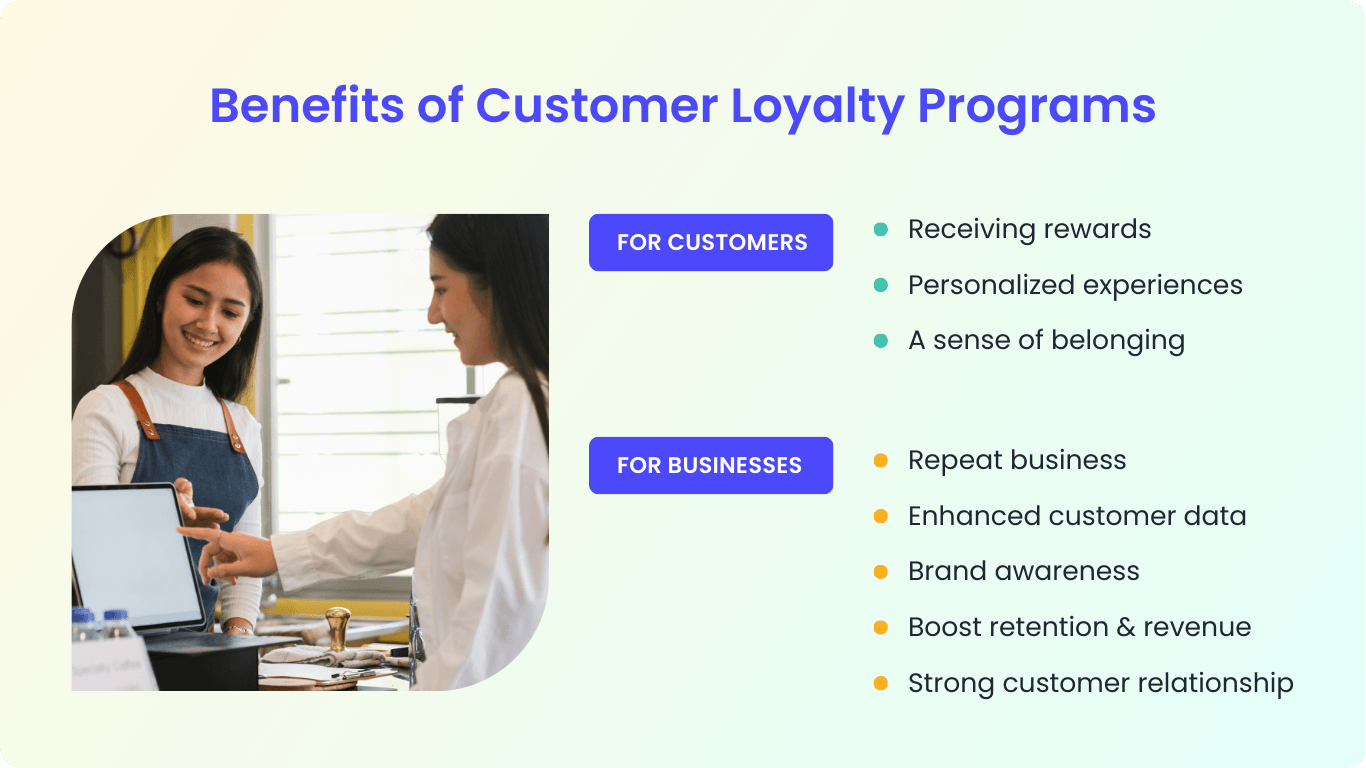
Customers enjoy:
- Rewards – With most programs, customers receive rewards. These may be perks such as discount codes, VIP treatment, freebies, or points that can be collected and redeemed.
- Personalized experiences – Personalization is a major driver of customer loyalty. By registering for loyalty programs and actively participating, customers provide companies with data on their shopping habits and interests. Businesses can use this information to share relevant recommendations and incentives with that customer.
- A sense of belonging – Customers gravitate to brands that complement their sense of who they are. Loyalty programs create the feeling of an “insider” community, especially if the brand is active on social media and encourages interaction between members.
Meanwhile, businesses benefit from:
- Repeat business – The chance to use or unlock rewards, coupled with a sense of connection to your brand, encourages customers to come back and purchase from you again.
- Enhanced customer data – As customers sign up for your customer loyalty programs and spend more time on your site, you’ll learn more about who they are – their preferences, behavior patterns, and demographics. Use this information to target your marketing efforts, improve your site experience, and more.
- Brand awareness – Customers who feel connected to your brand are more likely to recommend it to friends and family or engage with you on social media, bolstering your brand reputation and broadening your potential customer pool.
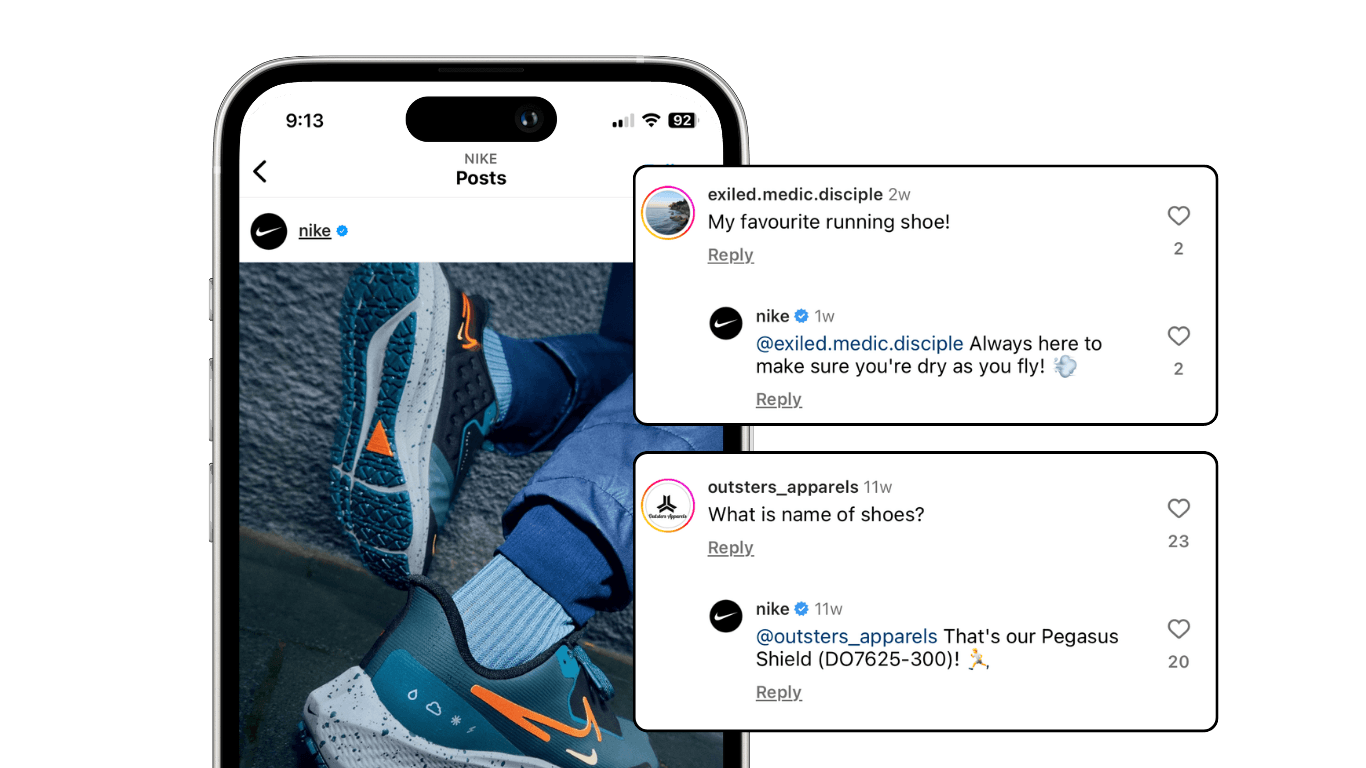
How do loyalty programs work?
Points-based programs
In points-based programs, customers earn points for making purchases or for engaging with your brand (for instance, by leaving product reviews or starting a wishlist). They can redeem the points for rewards or discounts.
Advantages
- Simplicity – Points-based programs are usually easy to understand for both customers and businesses, providing a clear incentive structure.
- Flexibility – Customers can collect points over time and choose when and how to redeem them for their favorite products or services.
Challenges
- Potential for abuse – Depending on the structure of the program, customers might engage in strategic behavior to maximize points without necessarily increasing their loyalty to the brand.
- Perceived lack of value – If the redemption options are unexciting or require too many points for significant rewards, customers may feel discouraged from participating.

Source: Starbucks Rewards
Tiered loyalty programs
Tiered customer loyalty programs categorize customers into different levels based on their loyalty or spending levels. Each tier offers escalating benefits, encouraging customers to strive for higher tiers.
Advantages
- Gamification – Tiered programs create a sense of achievement and progression, motivating customers to increase their spending to reach higher levels.
- Enhanced engagement – Offering exclusive benefits at each tier fosters a sense of exclusivity and encourages customers to remain loyal to the brand.
Challenges
- Complexity – Managing multiple tiers and benefits can be challenging for businesses, leading to potential confusion or inconsistencies in program implementation.
- Exclusivity concerns – Customers who are unable to reach higher tiers may feel like second-class citizens, leading to dissatisfaction and reduced loyalty.

Source: Lancome
Paid membership programs
Paid membership programs require customers to pay a fee in exchange for access to exclusive perks, rewards, or services.
Advantages
- More revenue – Paid membership fees provide a steady stream of income for businesses, offering financial stability and a basis for long-term planning.
- Enhanced loyalty – Customers who invest in paid memberships are more likely to remain loyal to the brand to justify their investment and maximize the benefits.
Cons
- Limited appeal – Customers need to feel that the value of the brand is worth the membership fees. Otherwise, they might be reluctant to take the plunge.
- Dissatisfaction – If the benefits of the paid membership don’t live up to promises or justify the cost, customers may churn.
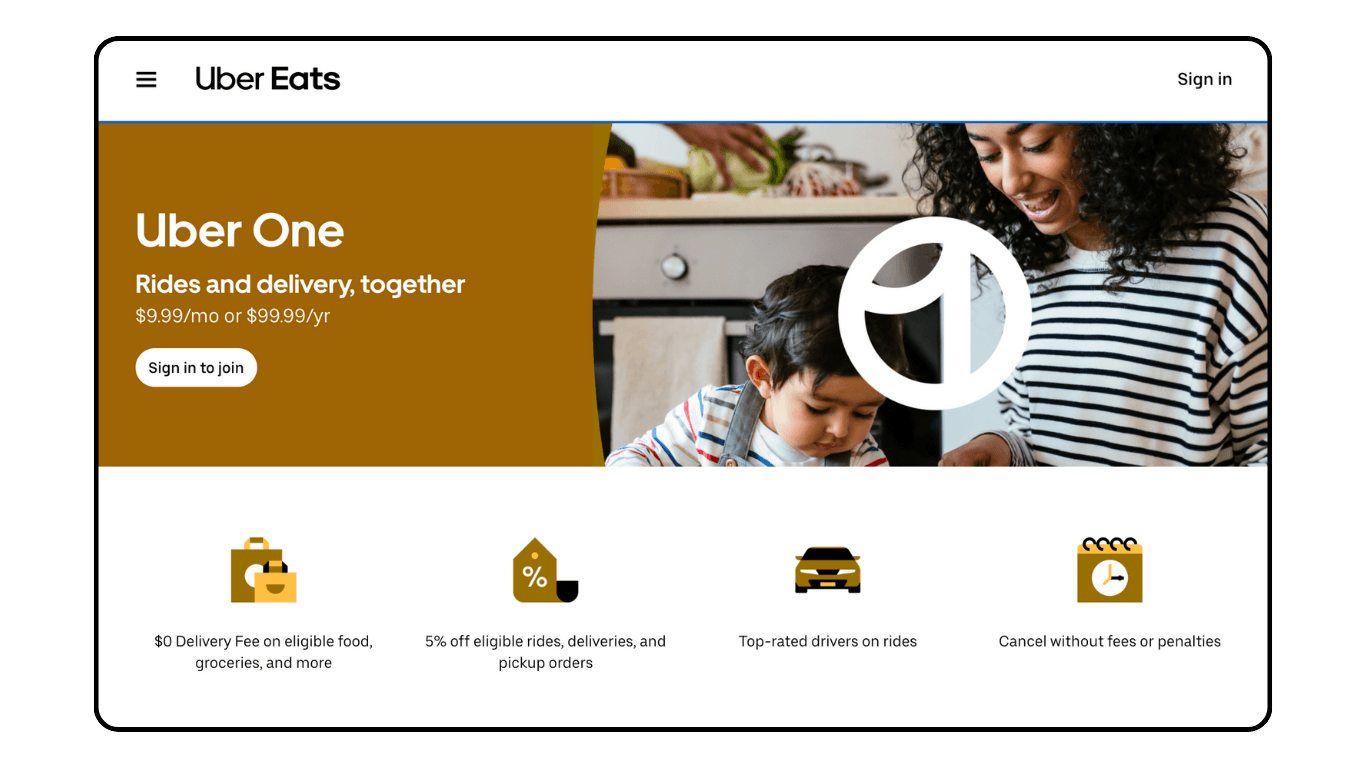
Source: Uber One
Value-based programs
These customer loyalty programs are aimed at forming an emotional bond with customers. Rather than offering them perks and shopping incentives, you donate a percentage of revenue from each purchase to a cause that fits with your brand values.
Advantages
- Positive brand image – Customers are increasingly interested in shopping with brands whose values they share. This is a way to show your humanity and prove you have a genuine desire to do good.
- Emotional connection – By supporting you, customers feel like a partner in a shared initiative.
Challenges
- Limited appeal – Not all customers will share your philanthropic drive.
- No direct rewards – Customers won’t receive any tangible shopping rewards (such as points they can “spend”) so they may be less incentivized to return.
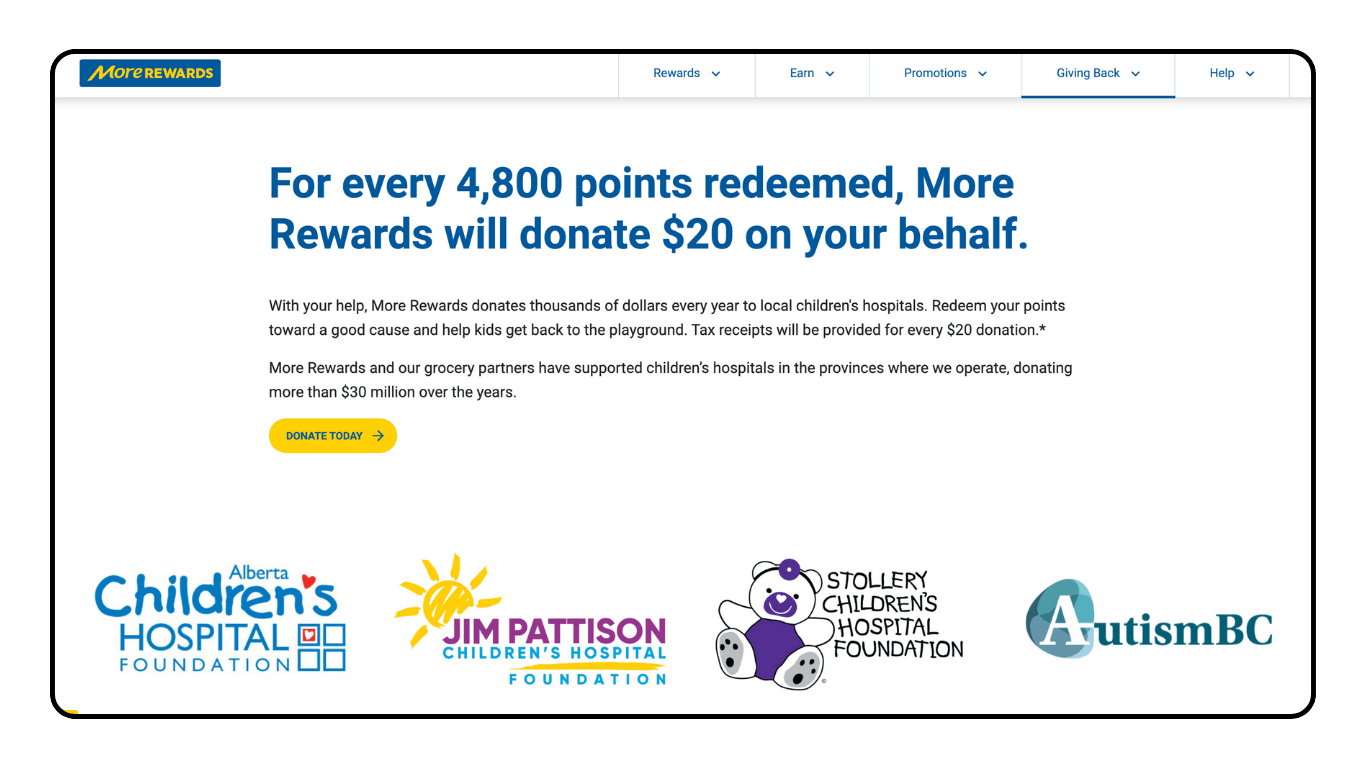
Source: More Rewards
How to create a customer loyalty program
Designing a successful customer loyalty program requires careful planning and consideration of various factors. Here are four key steps that businesses should follow when creating and implementing a loyalty program:
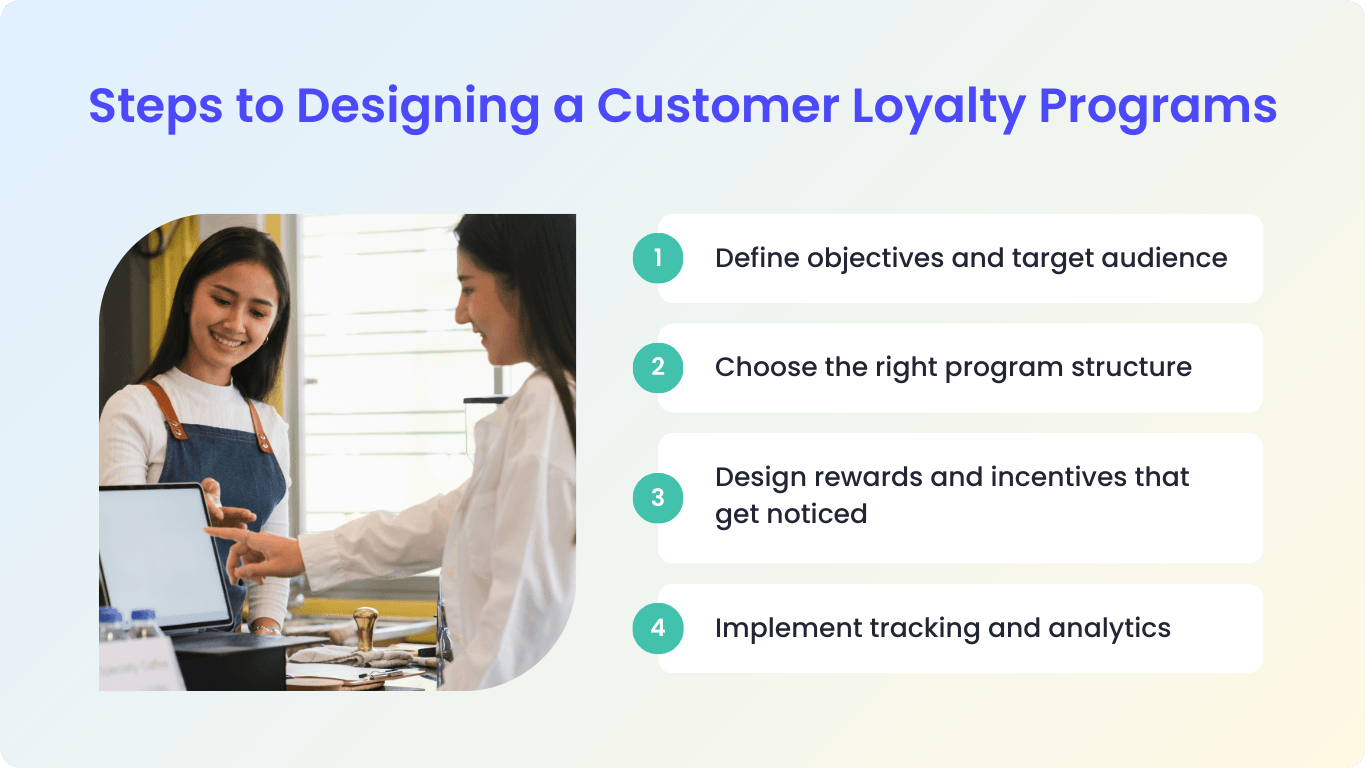
1. Define objectives and target audience
Begin by clearly outlining the objectives of your loyalty program. Are you focused mainly on increasing customer retention, encouraging higher spending, or attracting new customers?
Then, zero in on your target audience. If you’re aiming to boost average order value, take a look at your current high-spending customers. What do they have in common? What do their purchasing patterns look like?
Start building a profile of your ideal loyalty program customers so that you can tailor your structure, incentives and (later) your marketing and communications tactics to them.
2. Choose the right program structure
With your objectives and audience clear, it’s time to settle on a structure for your program.
Think through the advantages and disadvantages of each structure, weighing factors such as complexity, engagement potential, and cost-effectiveness.
There’s no right answer here – it’s all about what fits best with your goals, resonates with your customers, and fits with your business model and resources.
3. Design rewards and incentives that get noticed
Your rewards are the hook for your entire program, so choose incentives that provide tangible value and motivate customers to engage.
These rewards could include discounts, free products, or exclusive access to events or experiences.

Source: Sephora
4. Implement tracking and analytics
Begin by clearly outlining the objectives of your loyalty program. Are you focused mainly on increasing customer retention, encouraging higher spending, or attracting new customers?
Then, zero in on your target audience. If you’re aiming to boost average order value, take a look at your current high-spending customers. What do they have in common? What do their purchasing patterns look like?
Start building a profile of your ideal loyalty program customers so that you can tailor your structure, incentives and (later) your marketing and communications tactics to them.
Finding software to build your customer loyalty program
With a thoughtful and well-balanced loyalty program in place, you have a powerful foundation for sales growth, a stronger brand reputation, and brand-new opportunities to engage with both veteran and budding fans.
When you’re ready to start setting up your program, you’ll need a software solution that can help you allocate points, manage rewards, and track the impact your program is having on your business.
Breadstack provides an all in one customer loyalty program that showcases a combination of intuitive tools and meaningful analytics.
